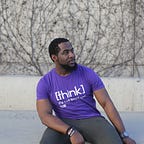Deferred Dreams in American Higher Education
First written September 10, 2014 by Kyle Southern
This week, US News & World Report released its annual rankings of the nation’s colleges and universities. This release coincided with a burst of discussion in major media outlets about the value of college education and the ability of people from lower- and middle-income households to access the benefits that come from earning an educational credential beyond a high school diploma. The day before US News released the rankings, the New York Times released another ranking scheme of top colleges — those with graduation rates above 75%. This index ranks institutions based on measures of economic diversity among their student populations.
Although a significant majority of Americans express a broadly supportive view of racially mindful affirmative action practices in college admissions, scholars and commentators now place increasing attention on the imperative to promote socioeconomic diversity on America’s college campuses. Recent publications by the Century Foundation and Georgetown Law Professor Sheryll Cashin make cases for new models for advancing campus diversity that are focused on socioeconomic background, rather than race.
As economic inequality continues to grow in the United States, the public mission of higher education to provide opportunities for social mobility remains essential. According to Catharine Bond Hill, an economist and president of Vassar College, “We are being supported by the federal government and the state government as a nonprofit.
They’re doing that because of our nation’s commitment to equal opportunity and social mobility, and part of our obligation is living up to making that more of a reality in the United States.” (Vassar tops the Times’ economic diversity index.)
The educational benefits of diversity in many forms are well documented in the research literature, and judicial opinions have acknowledged those benefits. But as institutions pursue greater diversity, they must confront myriad challenging phenomena, including:
- State governments have steadily decreased their financial commitments to public institutions, and many institutions have raised tuition rates, opened more seats for higher-paying out-of-state students, and struggled to maintain commitments to serving low-income students who require high amounts of scholarships and grants as they seek to make up for lost revenue.
- Although 27% of low-income households are led by an immigrant or foreign-born adult, only 15% of middle- and high-income families are led by non-native-born adults. As a growing proportion of low-income students come from immigrant households, colleges must address barriers to advancing access for those students beyond income to other aspects of social capital — including language barriers, unfamiliarity with the college admission process, and reluctance to potentially reveal undocumented residency status.
- A disproportionate share of African American students are unprepared for college level work upon graduation from high school. Nearly one-third of black students must take remedial courses in college — which can serve as a deterrent to eventual college completion — compared to 20% of their white peers.
Economic challenges, demographic shifts, and enduing institutional racism all conspire to erect both new and familiar hurdles to advancing diversity, equity, and inclusion at institutions of higher education nationwide. Higher education leaders face the responsibility, however, to pursue the public good mission of their institutions to do the work of promoting social mobility in a time when the gulf between well-off and poor Americans continues to grow, thinning the ranks of the middle class. Former Labor Secretary Robert Reich recently wrote on the need to de-stigmatize vocational and technical education, as associate’s degrees and technical certificates can pave the way to middle class wages for many Americans, in the absence of a four-year degree. Secretary Reich is right that vocational and technical education plays a critical role in the postsecondary landscape, but I am concerned when 1) folks with doctorates who occupy places of privilege in places like UC Berkeley direct people away from four-year degrees, and 2) people who are generally “cooled-out” of pursuing a four-year degree tend to be students of color. Higher education should also be about more than training for a job — it is about preparing for a life of civic participation.
In this country, we appear unlikely to ever fully disentangle race and income inequality. It is unfair to ask either the K-12 or higher education sectors to complete the task of undoing the exploitation on which so much of the country’s wealth has been built. However, just as educators in rural, suburban, and urban areas alike are performing essential work to empower young people through education in K-12 schools, so too must higher education professionals develop and implement strategic plans for diversity and equity — not only because this work is important for society as a whole, but because doing so creates more dynamic and creative communities for teaching, research, and service. Diversity, equity, and inclusion are words as powerful as their definitions are up for debate. But higher education cannot fulfill its public role of preparing educated citizens when student body demographics — by race, socioeconomic background, immigration status, urban and rural background, and more — do not resemble those of the public it serves.
No institution on the New York Times’ index enrolls a student body in which more than one-quarter of students are eligible for federal Pell grants. Those students come from the lower 40% of the country’s household income distribution. The longer we are comforted enough by rhetoric around diversity not to demand more tangible action, the longer the country’s full potential will remain deferred.
